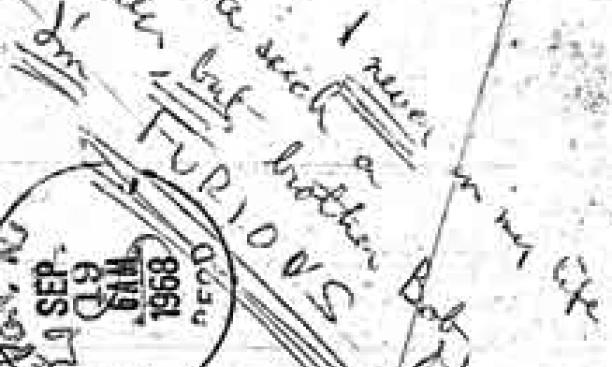
By Martha Vega-Gonzalez ’09
This article, one of two about the dawn of coeducation at Princeton, is part of an occasional series about Princeton history and the University archives at Mudd Library. Vega-Gonzalez, a recent graduate who majored in history, lives and works in New York City as a freelance writer.
 |
(Courtesy Princeton University Archives) |
It's hard to imagine what Princeton University would look like today without women, and yet, women only have been a part of undergraduate life for 40 years. Princeton admitted its first female graduate student in 1961, but it wasn't until 1969 that the University started to admit female undergraduates as degree candidates. If that sounds far removed in time, consider that the last eating club on the Street to go co-ed only did so in 1991.
The decision to go co-ed was not an evident one. Historically, Princeton has tended to be on the conservative side, and the University was the last of the Big Three to "fall" to the coeducational revolution. By the time that Old Nassau opened its doors tow women, the administration had become determined to catch up with the spirit of the times, not to mention the genius gents who, it was feared, would increasingly turn Princeton down to attend coeducational rivals.
Amid this spirit of change Arthur J. Horton ’42, the University's director of development, provided a voice of disagreement. On the Patterson Committee, a group of faculty and administrators that studied and advocated the move to a coeducational campus, Horton had cast the lone dissenting vote. He soon received letters from alumni on both sides of the issue. Many applauded the move to admit women, while many others had a visceral reaction against the change.
Some alumni reduced their Annual Giving contributions, writing cordial notes to explain the reduction in their generosity (many of these letters are available at Mudd Library in the Arthur J. Horton Collection on Coeducation). Other alumni, such as Geoffrey Doyle ’47, expressed their feelings more colorfully. Doyle, who worked with Annual Giving, was so incensed that he composed his letter on the very newsletter that informed him of the change:
"This pisses me off so much I'm writing you right back on this -- I love women + have no objection to Princeton being coed BUT when deserving guys + alumni SONS can't get in NOW despite GOOD marks + wind up in "POTTAWATTAMIE" THEN to have the idiots let in 1000 girls who'll all make it ANYWAY when the 1000 extra guys NEED Princeton then you'll find me cancelling OUT.
"FORGET IT!"
Doyle was so enraged that after he stuffed his message in an envelope, he continued writing on the outside, explaining that 32 other alumni with good A.G. records all agreed with him. Doyle seemed to realize the intemperance of his letter. He explained on the envelope, "P.S. -- I never in my life wrote such a letter, but brother Bob, I'm FURIOUS!"
Today, undergraduates working for Annual Giving's Tiger Call still encounter alumni who refuse to donate to the University due to the fact that the Princeton now admits women (which, I can attest from personal experience, always makes for an awkward conversation when the Tiger caller in question happens to be a woman). Of course, these people are in the minority, and even in 1969, a sizeable group of people approved of the move to admit women. But that's a story for another time.
Click here to read Vega-Gonzalez's second column on coeducation.
